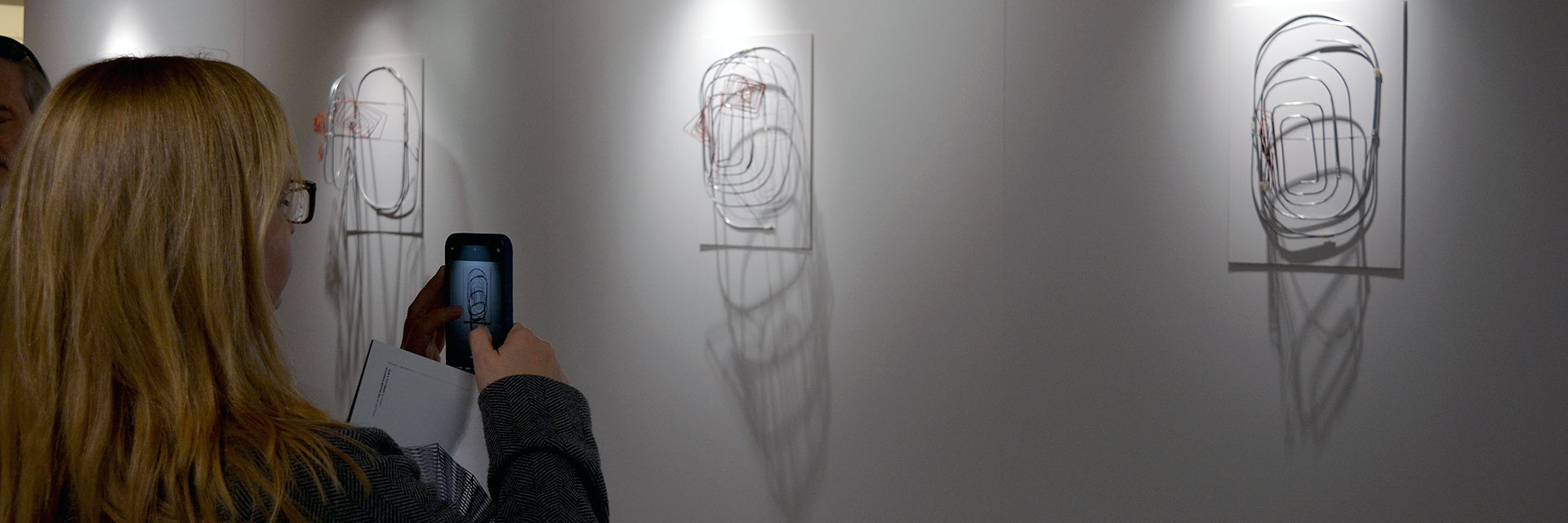
What Is a Line?
Interdisciplinary Research Shows Human Possibilities
What Is a Line?
Interdisciplinary Research Shows Human Possibilities
Vernelle A.A. Noel would like to show you what's possible with just a line.
Visitors will experience history, an endangered culture, the essence of human expression, and a digital design program all in Noel's exhibit Design and Making in the Trinidad Carnival: Histories, Re-imaginations, and Speculations of Computational Design Futures.
Pick up a souvenir postcard on the way out of the exhibit, and you may never look at a line the same way again.
Design and Making in the Trinidad Carnival: Histories, Re-imaginations, and Speculations of Computational Design Futures is on display at the Georgia Tech Library's first-floor gallery now through February 28, 2023.
Noel, an assistant professor appointed to the Schools of Architecture and Interactive Computing believes the act of defining a line is an interdisciplinary task. "This exhibition showcases lines as cognitive expressions; code; embodied, corporeal movements; cultural and digital practices; structure; and interaction," she said.
The result is a new blend of digital design, not native art but research. Noel's work can drive architecture that is informed by human needs, human experience, and technological progress.
"Architecture investigates and materializes how humans engage with space, materials, light, technology, culture, the environment, and society," Noel said. "In addition to architecture, my expertise is in design computation which brings together computational theories, tools, and methods in design practice and pedagogy."
Noel's research expands on Tim Ingold's concept of a line with the question: What does wire-bending, weaving, drawing, writing, architecture, moving, and programming all have in common? The answer: they all proceed among lines.
The lines on display in Noel's exhibit include wire-based architectural pavilions, wire Carnival masks, computer program outputs, and daily sketches. These lines also explore how we might rethink cultural practices and restore histories with computation and digital technology, Noel said.
"The exhibition is built on and based on an investigation into a craft practice integral to the cultural design practice of Trinidad & Tobago Carnival," she said. "The culture and craft of Carnival and wire-bending is part of my history and culture."
It also shows Noel's new design ideas, ways she has found to interact with space, and fabrication methods that combine non-digital computational tools, novel software, computer-controlled machines, robots, and computer interactions.
The software Noel developed, Konecktor, was designed to extend the craft of wire building. Several installations in Design and Making in the Trinidad Carnival: Histories, Re-imaginations, and Speculations of Computational Design Futures were created through Konector, using 3D-printed connectors and wire rods to execute the program's designs.
"The labor that goes into labeling, fabricating, and sorting parts and assembling this structure is significant," said Noel, of the exhibit structure called Vortex.
Slow-exposure photographs of Noel building the wire structures are also on display, showing the physicality of the traditional art of wire-bending. These show how human movement becomes part of a structure, she said, as a body shapes three-dimensional lines that then become an object that takes up physical space. Then, when a person observes movement in the lines of the structure, those lines take on new meaning.
Similarly, the lines created by the wire Carnival wire masks on display in the exhibit have many interpretations. At first glance, the masks are faces, Noel said, but then visitors can start to see the lines of the wires becoming lines of shadows. The experience of looking at a face that is looking back at you results in a "form based on an embodied dialogue with wire," she said.
"I love the main goal of the exhibition, which is to make shadows speak," she said. "I love the wire masks and the shadows they cast. It's up to the viewer to interpret what they see. And they may see multiple things at multiple times and perspectives. The shadows can speak to the artifact as a physical thing, it can be conceptual, it can be diagrammatic, and more."
Visitors may interpret and reinterpret the shadow lines in Noel's exhibit based on the interaction of light, the materials she used, and whether they were created through hands or machines, she said. "This is what it means to be human and a human living in a society."
Design and Making in the Trinidad Carnival: Histories, Re-imaginations, and Speculations of Computational Design Futures is generously supported by the Graham Foundation for Advanced Studies in the Fine Arts, the College of Design, the School of Architecture, and the School of Interactive Computing.